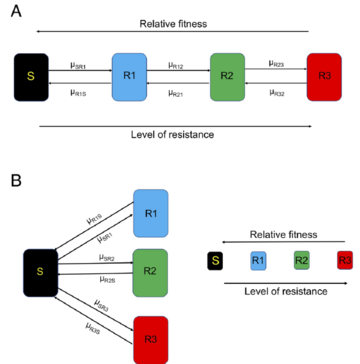Levin BR, Berryhill BA, Gil-Gil T, Manuel JA, Smith AP, Choby JE, Andersson DI, Weiss DS, Baquero F. Theoretical considerations and empirical predictions of the pharmaco- and population dynamics of heteroresistance
Proc Natl Acad Sci U S A. 2024
"We need more accurate methods to predict the success of an antibiotic treatment"- Dr. Fernando Baquero -
Summary:
Antibiotics are considered one of the most important contributions to clinical medicine in the last century. Due to the use and overuse of these drugs, there have been increasing frequencies of infections with resistant pathogens. One form of resistance, heteroresistance, is particularly problematic; pathogens appear sensitive to a drug by common susceptibility tests. However, upon exposure to the antibiotic, resistance rapidly ascends, and treatment fails. To quantitatively explore the processes contributing to the emergence and ascent of resistance during treatment and the waning of resistance following cessation of treatment, we develop two distinct mathematical and computer-simulation models of heteroresistance. In our analysis of the properties of these models, we consider the factors that determine the response to antibiotic-mediated selection. In one model, heteroresistance is progressive, with each resistant state sequentially generating a higher resistance level. In the other model, heteroresistance is non-progressive, with a susceptible population directly generating populations with different resistance levels. The conditions where resistance will ascend in the progressive model are narrower than those of the non-progressive model. The rates of reversion from the resistant to the sensitive states are critically dependent on the transition rates and the fitness cost of resistance. Our results demonstrate that the standard test used to identify heteroresistance is insufficient. The predictions of our models are consistent with empirical results. Our results demand a reevaluation of the definition and criteria employed to identify heteroresistance. We recommend that the definition of heteroresistance should include a consideration of the rate of return to susceptibility.
Why do you highlight this publication?
This publication is an example of a long-lasting collaboration (at least three decades) between the Servicio de Microbiología of Ramón y Cajal Hospital-IRYCIS and the Department of Biology, Emory University, in Atlanta, USA, exchanging views, experiments, and collaborative endeavours.
Publication commented by:
Dr. Fernando Baquero Mochales


